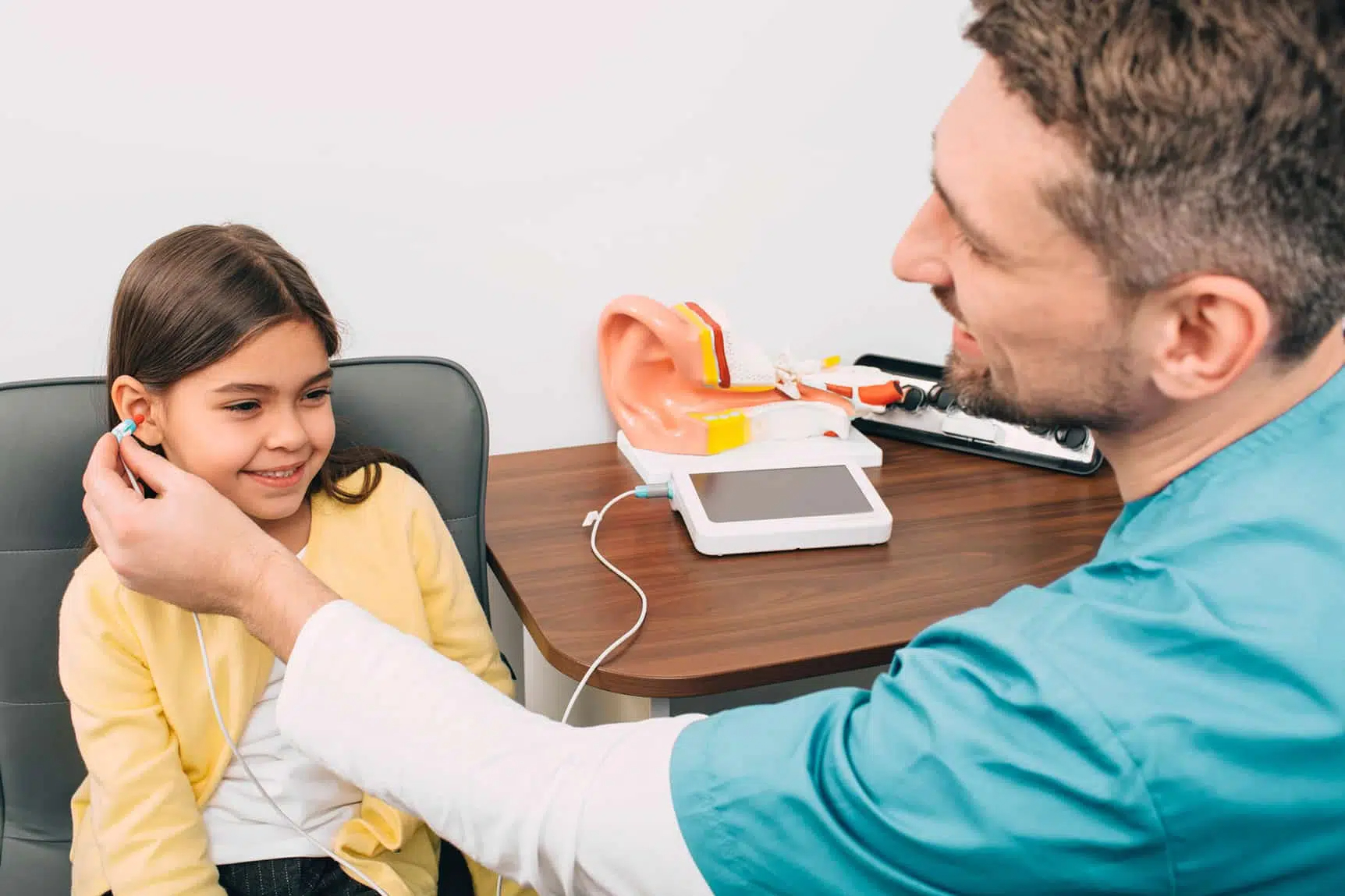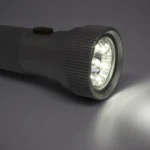
Raymond Carhart is considered a pioneer in the field of audiology, having made significant contributions to our understanding of hearing and hearing disorders. He is credited with coining the term “audiology” in 1946, which has since become the standard term used to describe the study of hearing and balance disorders. Carhart’s work focused on the diagnosis and treatment of hearing loss, and he developed many of the foundational techniques and methods used in audiology today. His contributions helped to establish audiology as a distinct field of study and practice, separate from otology and other related disciplines.
The American Academy of Audiology was founded in 1988 to promote the advancement of audiology as a profession and to support the professional development of audiologists. Today, the organization represents over 12,000 audiologists and other hearing health professionals from around the world. The Academy advocates for the rights of people with hearing and balance disorders, promotes public awareness of hearing health issues, and supports research and education to advance the field of audiology. The World Health Organization’s estimate that over 5% of the global population has disabling hearing loss underscores the importance of organizations like the American Academy of Audiology in promoting hearing health and providing access to audiological services.
The establishment of the first doctoral program in audiology at Northwestern University was a significant milestone in the development of the profession. The program was designed to provide advanced training in the diagnosis and management of hearing disorders, and to prepare audiologists for leadership roles in research and clinical practice. The program was led by Dr. James Jerger, a prominent figure in audiology who made significant contributions to the field throughout his career. Today, Northwestern University remains a leader in audiology education and research, with a number of innovative programs and initiatives focused on improving the prevention, diagnosis, and treatment of hearing and balance disorders.
The first known description of hearing loss and its treatment dates back to ancient Egypt, where physicians used mixtures of herbs and minerals to treat hearing disorders. These treatments were often combined with incantations and prayers, reflecting the belief that hearing loss was caused by spiritual or supernatural forces. The Edwin Smith Papyrus, a medical text dating back to 1600 BCE, contains one of the earliest known descriptions of hearing loss, as well as instructions for treating it with various remedies.
The first known written description of the anatomy of the human ear was by the Greek philosopher and scientist Aristotle in the 4th century BCE. In his work “De Sensu et Sensibilibus” (On Sense and the Sensible), Aristotle described the ear as consisting of three parts: the outer ear, the middle ear, and the inner ear. He also noted the role of the ear in detecting sounds and maintaining balance, and proposed that different sounds were produced by different combinations of air vibrations.
The first commercial cochlear implant, the Nucleus 22, was approved by the US Food and Drug Administration (FDA) in 1984. The device was developed by Graeme Clark, an Australian researcher who had been working on cochlear implant technology since the 1960s. The Nucleus 22 was a significant advancement in the field of audiology, as it allowed individuals with severe to profound hearing loss to hear speech and other sounds with the help of electrical stimulation of the auditory nerve.
Since the approval of the Nucleus 22, cochlear implant technology has continued to evolve, with newer devices becoming smaller, more advanced, and more widely available. Today, cochlear implants are considered to be a safe and effective treatment option for people with severe to profound hearing loss who do not benefit from traditional hearing aids. The devices have been shown to improve speech perception, language development, and quality of life for many individuals with hearing loss. Cochlear implants are now used in many countries around the world, with an estimated 324,200 devices implanted globally as of 2019.
The global market for hearing aids has grown significantly in recent years, with increasing demand from an aging population and technological advancements in the field of audiology. In 2020, the global market for hearing aids was valued at approximately $10.1 billion. This includes both traditional hearing aids and newer, more advanced hearing devices such as cochlear implants and bone conduction devices.
The majority of hearing aids sold worldwide are behind-the-ear (BTE) or in-the-ear (ITE) devices, which use microphones to amplify sound and deliver it to the ear canal. However, newer devices such as rechargeable hearing aids, Bluetooth-enabled devices, and devices with artificial intelligence capabilities are becoming more popular as well.
The first known measurement of hearing acuity was conducted by the Italian physician and anatomist Antonio Maria Valsalva in the 17th century, using a series of tuning forks. Valsalva’s experiments involved measuring the threshold of audibility for different frequencies of sound, and he noted that hearing acuity varied depending on the frequency and intensity of the sound. His work laid the foundation for the development of modern audiometry, which is now used to measure hearing thresholds and diagnose hearing disorders.
The first clinical audiometer was developed in 1904 by the American otologist Harvey Fletcher. Fletcher’s device was a portable audiometer that could measure hearing acuity at different frequencies and intensities, and was widely used in clinics and hospitals around the world. Fletcher went on to make significant contributions to the field of acoustics and hearing science, including the development of the equal loudness contour, which describes the relationship between sound intensity and perceived loudness.
The field of audiology emerged as a distinct profession in the mid-20th century, following advances in audiological testing equipment and the introduction of new diagnostic techniques. In 1946, Raymond Carhart, an American otologist, introduced the term “audiology” to describe the study of hearing and its disorders. The field grew rapidly in the post-war period, with the establishment of audiology training programs and professional organizations, and the development of new technologies for hearing testing and rehabilitation.
In the United States, hearing loss is a significant public health issue, with an estimated 15% of adults reporting some degree of hearing loss. The prevalence of hearing loss increases with age, affecting approximately one-third of adults over the age of 65. Hearing loss can have a significant impact on quality of life, leading to social isolation, depression, and decreased cognitive function. Despite the high prevalence of hearing loss, many individuals do not seek treatment or are unaware of the available treatment options, highlighting the need for increased public awareness and access to audiological services.
The most common causes of hearing loss in adults are noise exposure, aging, and ototoxic medications. Occupational noise exposure is a particularly significant risk factor, with an estimated 22 million workers in the United States exposed to hazardous noise levels in their workplace. In addition to these factors, other health conditions such as diabetes, cardiovascular disease, and otosclerosis can also contribute to hearing loss. Despite the high prevalence of hearing loss, many individuals delay seeking treatment, with an average delay of 7-10 years between the onset of symptoms and seeking help. This delay can further exacerbate the negative impact of hearing loss on quality of life, highlighting the importance of early detection and intervention.
Approximately 60% of cases of childhood hearing loss are due to genetic factors, which can be inherited from one or both parents. In some cases, these genetic factors may be associated with other medical conditions or syndromes. Early diagnosis and intervention are critical for children with hearing loss, as delays in treatment can have significant negative impacts on language and social development. Genetic counseling can also be an important resource for families with a history of hearing loss.
Cochlear implants have revolutionized the treatment of severe to profound hearing loss, providing many people with access to sound who would otherwise be unable to communicate effectively. Today, cochlear implants are widely used around the world, and ongoing research is focused on improving their effectiveness and developing new technologies to enhance hearing function. However, they are not suitable for everyone, and the decision to pursue cochlear implantation requires careful consideration and evaluation.
The global market for hearing aids is expected to continue to grow in the coming years, driven by factors such as an aging population, increased awareness of hearing health, and technological advancements. However, access to hearing aids remains a significant challenge in many parts of the world, with affordability and availability being major barriers to care.
The Signia Silk Nx hearing aid is designed to be discreet and comfortable, with a nearly invisible design that fits snugly into the ear canal. While small size is a major factor in hearing aid design, other important considerations include sound quality, functionality, and user experience. As technology continues to advance, we can expect to see further innovations in hearing aid design and performance.
The Krakatoa eruption was one of the most powerful volcanic events in recorded history, with a sound that could be heard up to 3,000 miles away. While this level of sound intensity is incredibly rare, exposure to loud noise can still have damaging effects on hearing. Noise-induced hearing loss is a major concern in many industries and occupations, and prevention efforts such as hearing protection and noise regulation are critical for protecting workers’ hearing health.
The eruption of Krakatoa, which occurred in August of 1883, was one of the most powerful volcanic eruptions in recorded history. The sound produced by the eruption was so loud that it was heard up to 3,000 miles away, and it has been estimated to have generated a sound pressure level of approximately 180 decibels.
To put that into perspective, a normal conversation typically measures around 60 decibels, while a jet engine taking off at close range can measure around 140 decibels. The sound produced by the Krakatoa eruption was so loud that it ruptured eardrums of people in close proximity and was heard by people as far away as Australia and Mauritius.
The sound was caused by a combination of factors, including the explosion itself, the release of gases, and the resulting shock wave that traveled through the atmosphere. The sound waves from the eruption circled the globe several times, and some reports suggest that the sound could be heard for up to four days after the initial explosion.
The Krakatoa eruption had a profound impact on the local environment and on global weather patterns, with the resulting ash cloud causing spectacular sunsets around the world and a cooling effect on global temperatures. Today, the site of the eruption is a popular tourist destination, and researchers continue to study the effects of the eruption on the environment and on human history.
The science of sound is complex and fascinating, with many factors influencing the way we perceive and experience sound. Understanding these factors is important for developing effective interventions for hearing and balance disorders, as well as for creating safer and more enjoyable acoustic environments. Ongoing research in audiology and related fields will continue to shed light on the mysteries of sound and hearing, helping to improve the lives of millions of people around the world.









